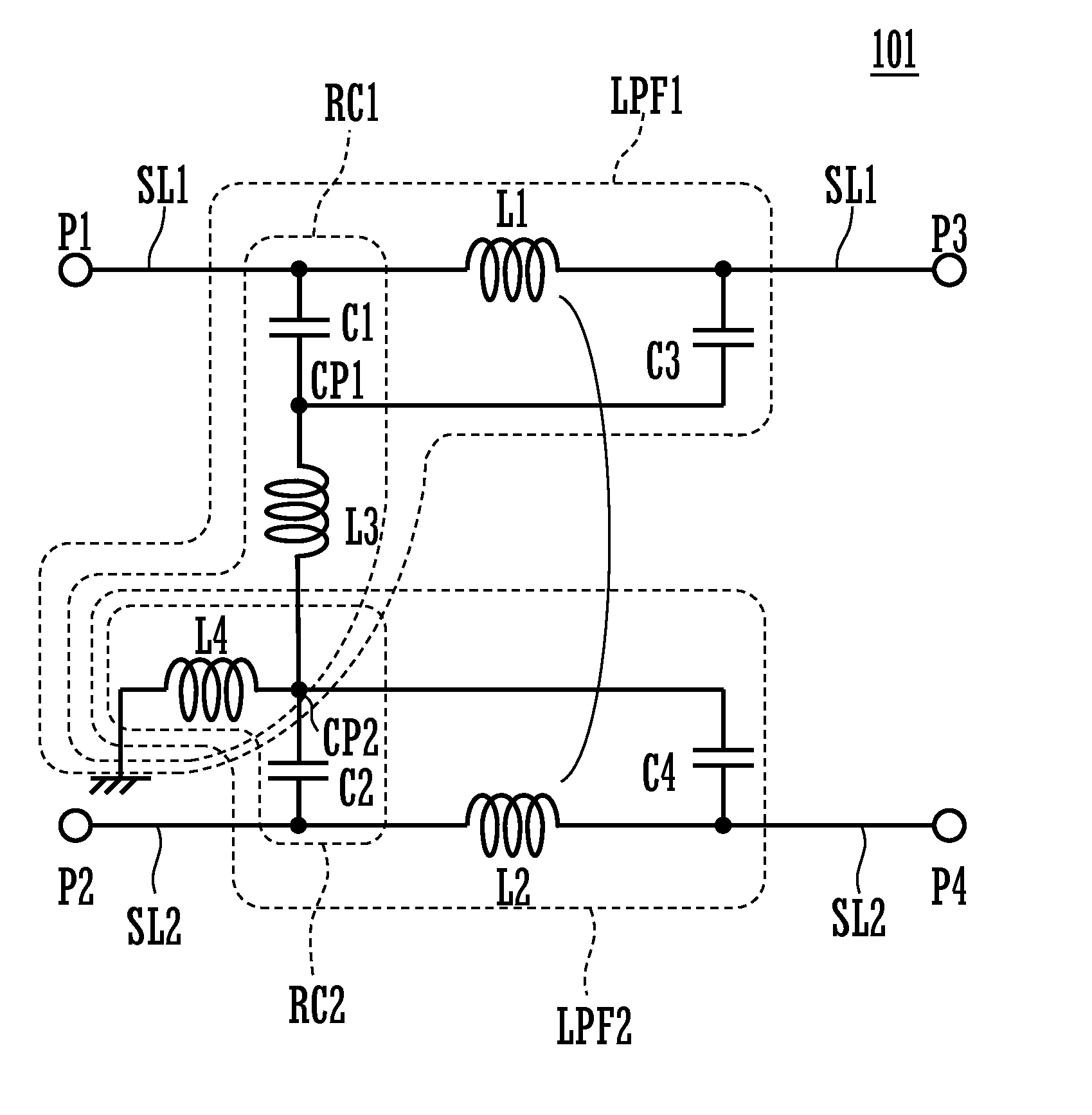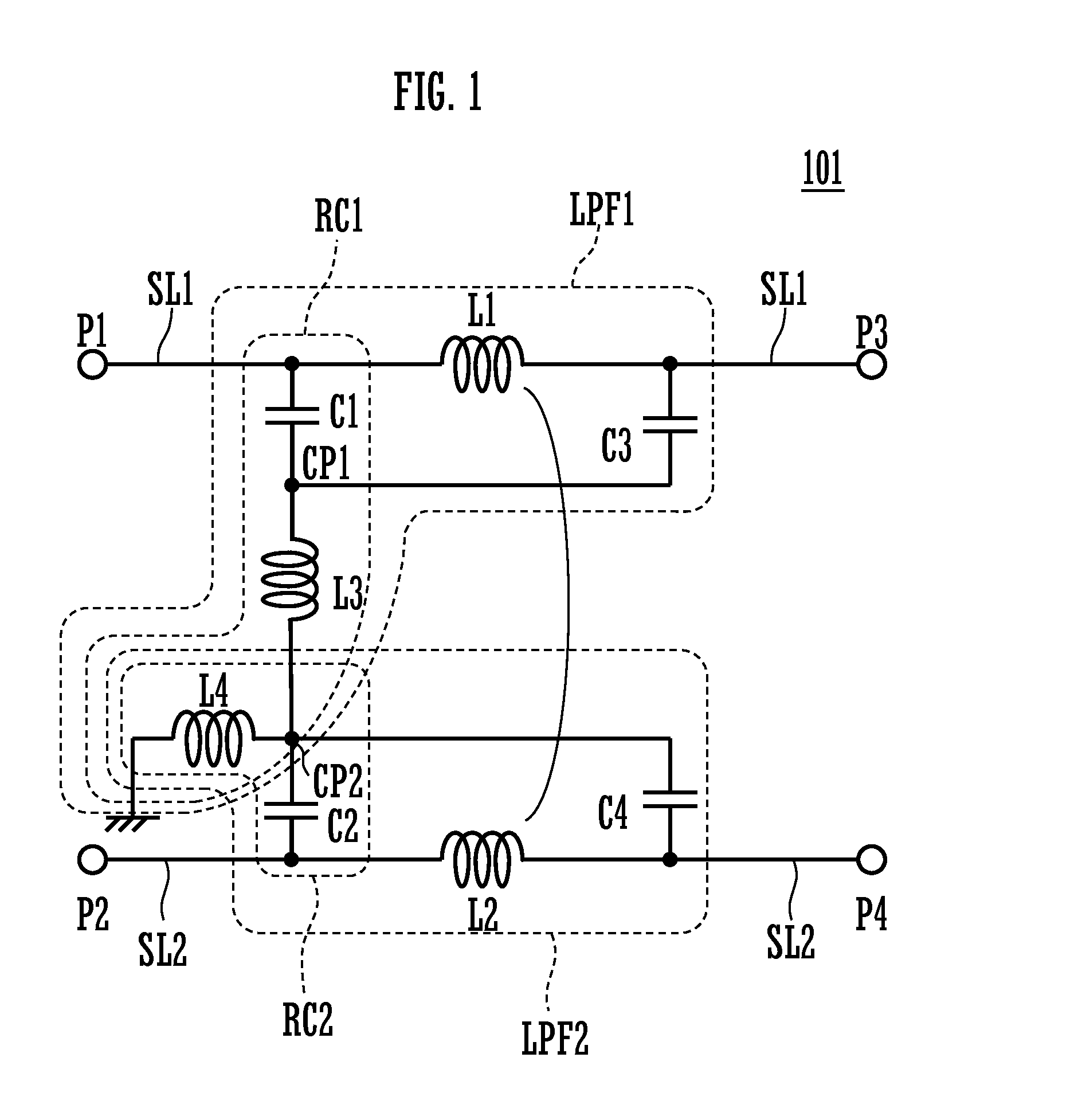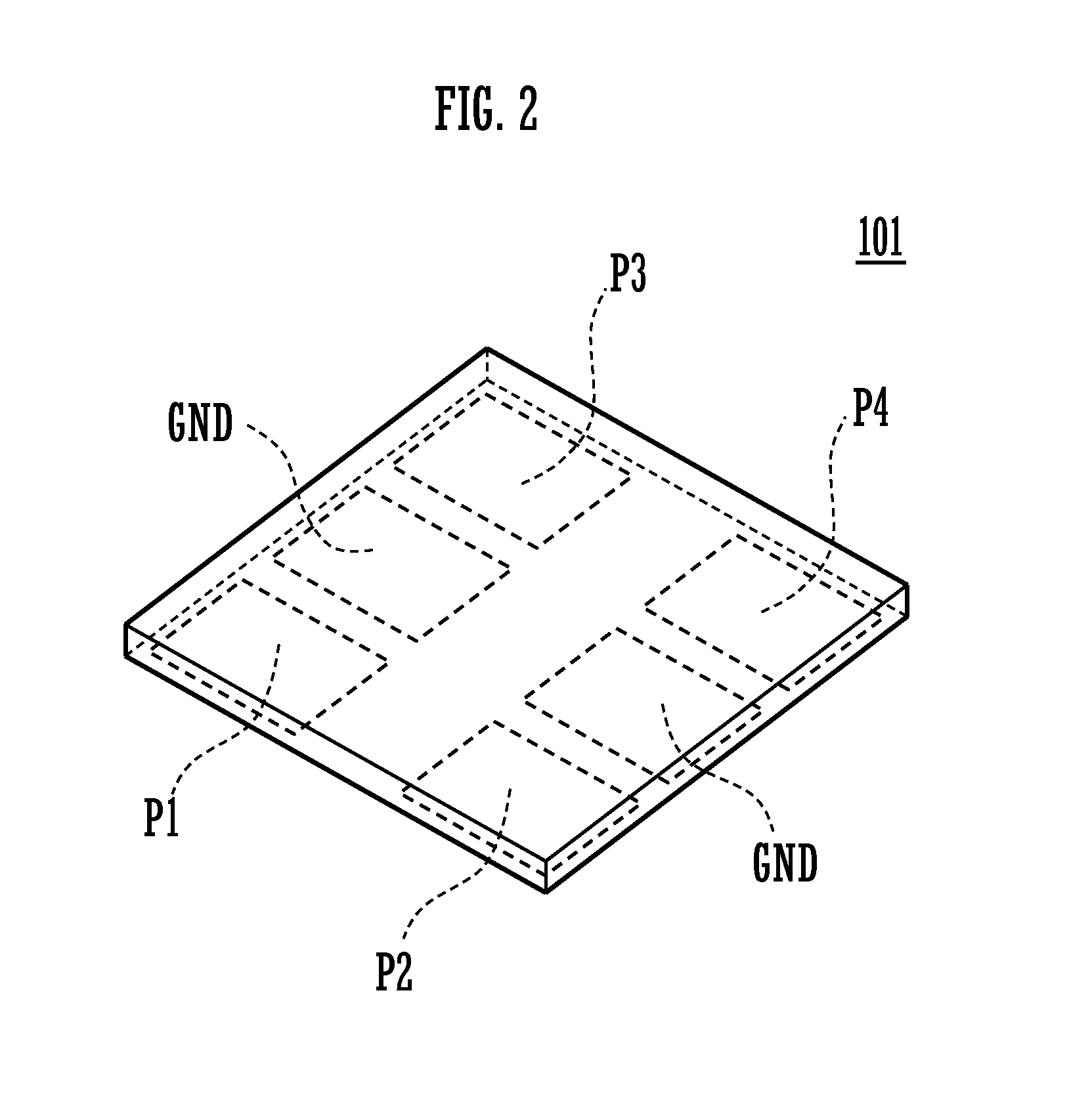Common mode filter
a filter and common mode technology, applied in the field of common mode filters, can solve the problems of increasing the transmission loss of a signal, reducing the self-resonant frequency, and requiring a small transmission loss, so as to reduce the unnecessary capacitance, reduce the effect of variation and space saving
- Summary
- Abstract
- Description
- Claims
- Application Information
AI Technical Summary
Benefits of technology
Problems solved by technology
Method used
Image
Examples
first preferred embodiment
[0037]A common mode filter according to a first preferred embodiment of the present invention will be described with reference to the drawings. FIG. 1 is a circuit diagram of a common mode filter 101 according to the first preferred embodiment of the present invention.
[0038]The common mode filter 101 preferably includes a differential transmission line including a first signal line SL1 and a second signal line SL2 between a port (P1, P2) and a port (P3, P4). The first signal line SL1 includes a first inductance element (hereinafter referred to as a “first inductor”) L1 arranged in series, and the second signal line SL2 includes a second inductance element (hereinafter referred to as a “second inductor”) L2 arranged in series. In addition, the common mode filter 101 preferably includes a ground as a reference with respect to the first signal line SL1 and the second signal line SL2. Moreover, the common mode filter 101 also preferably includes a first resonant circuit RC1 arranged bet...
second preferred embodiment
[0069]A common mode filter according to a second preferred embodiment of the present invention will be described with reference to the drawings. The circuit diagram of the common mode filter 102 according to the second preferred embodiment is the same as the circuit diagram shown in FIG. 1 in the first preferred embodiment.
[0070]FIG. 6 is an appearance perspective view of the common mode filter 102. The common mode filter 102 is a laminate of the base material layers including various conductor patterns to be described below. The common mode filter 102 includes ports P1 to P4 and a ground terminal GND on the bottom surface of the common mode filter 102.
[0071]FIG. 7 is a plan view of pre-laminated base material layers of a laminate that defines the common mode filter 102. The common mode filter 102 is a laminate of four base material layers BML1 to BML4 including various conductor patterns. The base material layers BML1 to BML4 are resin sheets, and the base material layer BML1 is th...
third preferred embodiment
[0090]FIG. 9 is a circuit diagram of a common mode filter 103 according to a third preferred embodiment of the present invention. While the common mode filter 103 has a basic circuit configuration similar to the circuit configuration of the common mode filter 101 shown in FIG. 1 in the first preferred embodiment, the first inductor L1 and the second inductor L2 are not positively coupled to each other in a magnetic field. In other words, the first inductor L1 and the second inductor L2 do not act as a common mode choke coil.
[0091]Even in such a common mode filter 103, the first capacitor C1, the third inductor L3, and the fourth inductor L4 define a first resonant circuit RC1, and the second capacitor C2 and the fourth inductor L4 define a second resonant circuit RC2. In addition, the inductors L1 and L2 and the capacitors C1, C3, C2, and C4 mainly define a low pass filter. Therefore, the first resonant circuit RC1 and the second resonant circuit RC2 prevent the common mode noise fr...
PUM
 Login to View More
Login to View More Abstract
Description
Claims
Application Information
 Login to View More
Login to View More - R&D
- Intellectual Property
- Life Sciences
- Materials
- Tech Scout
- Unparalleled Data Quality
- Higher Quality Content
- 60% Fewer Hallucinations
Browse by: Latest US Patents, China's latest patents, Technical Efficacy Thesaurus, Application Domain, Technology Topic, Popular Technical Reports.
© 2025 PatSnap. All rights reserved.Legal|Privacy policy|Modern Slavery Act Transparency Statement|Sitemap|About US| Contact US: help@patsnap.com



